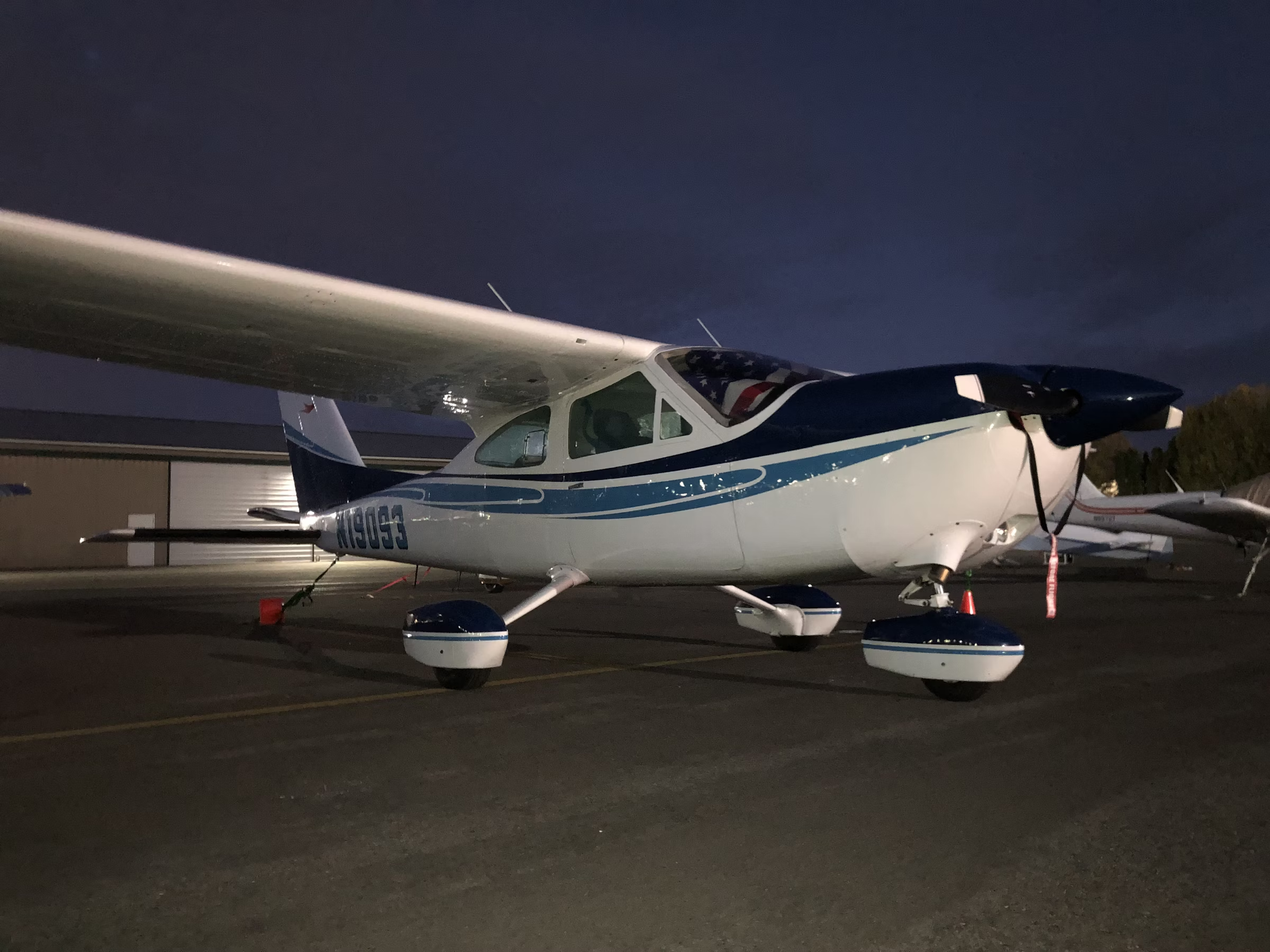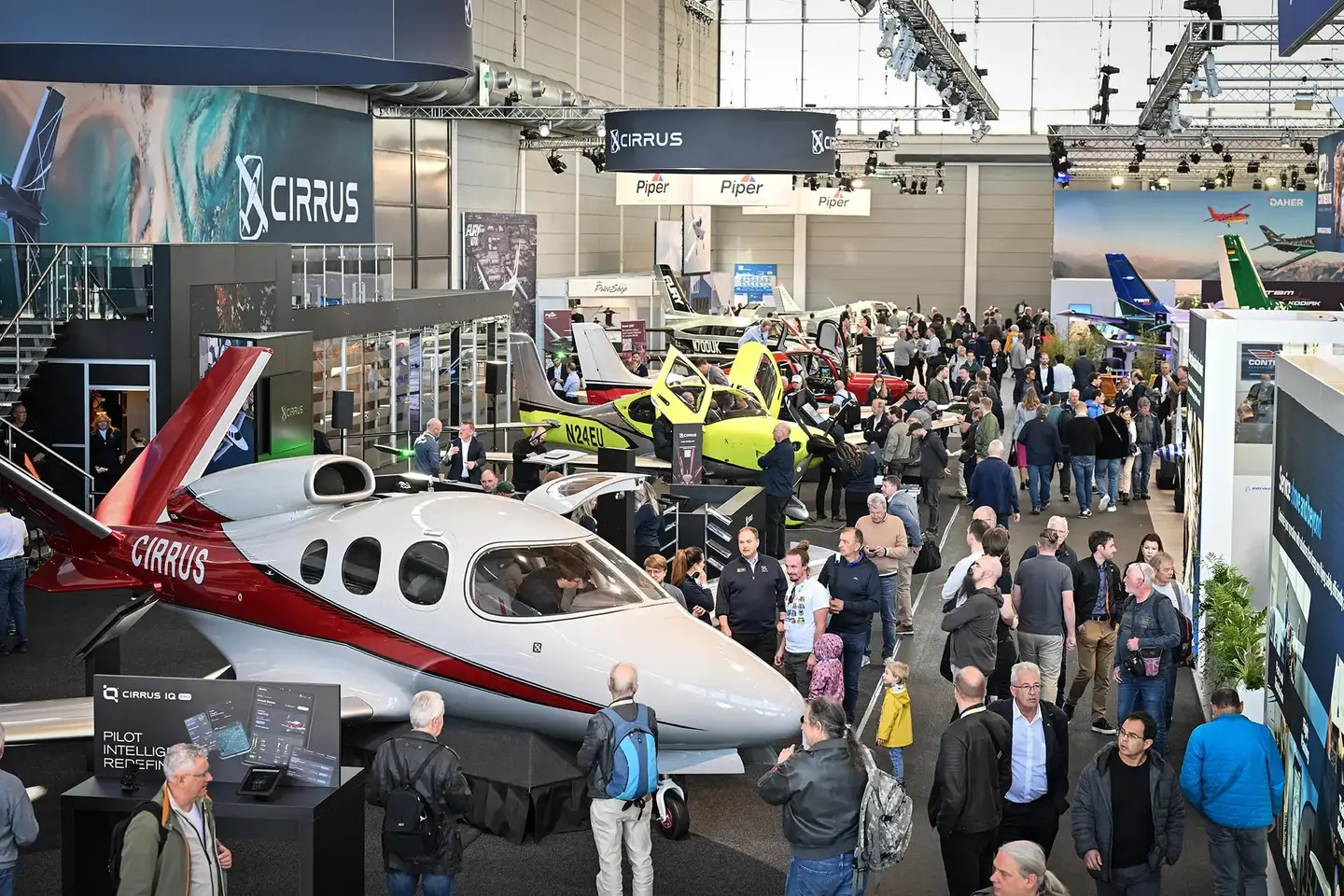
Stinson 108: The Flying Station Wagon Jason McDowell
On the spectrum of popularity, various aircraft types ebb and flow from decade to decade, and the most sought-after models become easy to spot. Cessna 170s and Carbon Cubs are currently among the most desirable types, and while their popularity and reputation are not necessarily undeserved, the resulting prices often stretch out of reach for many.
Less obvious are the underappreciated and undervalued airplanes that hide in the less-traveled corners of classified listings, and one that presently seems to be lurking there is the Stinson 108. The 108 is a four-place, steel-tube-and-fabric 1940s-era taildragger powered by a variety of engines. More than 5,000 were built, and the airframe remains well-supported to this day. We examine here its strengths and weaknesses, as well as explore how the 108 ranks as an approachable aircraft.
Model History
The 108 was first offered in 1946, and a total of 5,261 production aircraft were built through July 1948. Four primary subtypes were available: the 108 (or “straight 108”), 108-1, 108-2 and 108-3.
The “straight 108” was the initial model. It came equipped with a 150 hp Franklin engine and a gross weight of 2,150 pounds. The 108-1 saw an increase in gross weight to 2,230 pounds. The 108-2 came equipped with a 165 hp Franklin engine and bungee-based rudder trim.
The 108-3 was the first model that differed visually. The tail was increased in size and stood a foot taller than the preceding models. Unfortunately, the rudder itself was only slightly enlarged, and many pilots complain that the 108-3 is more difficult to handle in crosswinds and while taxiing in windy conditions. Rudder trim was provided via a trim tab, and the gross weight grew to 2,400 pounds.
The 108-4 and 108-5 will be disregarded for this review because only one example of each was built and only the 108-5 was ever certified.
Two trim levels were offered. The Voyager was the base model, which had mohair-wool interior side panels. The “Flying Station Wagon” came with wood interior panels that resembled the “woody” cars of the era and added a structurally reinforced rear floor that raised the weight capacity from 350 to 600 pounds. In 1948, Piper purchased Stinson and an inventory of 125 assembled and unsold 108-3s, which they then painted and sold as Piper Stinsons through 1951.
Market Snapshot
It has been said that every Bellanca Viking costs $150,000. The implication is that you’ll spend that amount in one of two ways: either in the form of repairs, making an inexpensive example safe and airworthy, or in the form of purchasing a pristine model in the first place. To a certain degree, the same logic can be applied to the Stinson 108.
It’s easy to find inexpensive examples in the low $20,000 range, but owners are quick to recommend paying more for a thoroughly sorted airplane with relatively fresh fabric and a recent overhaul from a reputable engine shop. The higher acquisition price can be difficult to stomach, but many have discovered the hard way that it’s costlier to individually tackle all of the issues that make an inexpensive model that much more affordable. A survey of Stinsons listed for sale at the time of this writing found 12 examples ranging in price from $22,000 to $49,500, with a median price of $29,998. All were equipped with Franklin engines, though one airplane with the Lycoming O-360 conversion did previously sell for just over $60,000.
Many 108s have metalized fuselages, eliminating fabric entirely. While the prospect of never having to replace costly fabric is enticing, the metal conversions reportedly create a louder cabin environment and are also a bit heavier, which reduces the useful load. Like any older tailwheel aircraft with steel tubing, the aft longeron tubing should be closely inspected for any signs of rust prior to purchase. Likewise, the aluminum wing spars should be carefully inspected for signs of corrosion.
Engine Options
Franklins are by far the most popular engines to be found in the Stinson 108. Named for their rated horsepower, the 150 and 165 are the most common, with a 1,200-hour TBO. The more powerful 220 has a 1,500-hour TBO, and the relatively rare 180 has a 2,000-hour TBO.
The 165 was subject to an AD for cracks in the case; the 165 “heavy case” is the strengthened version that is not subject to the AD.
The Franklin engine can be a blessing for the buyer if the engine has been maintained by a Franklin expert. The unfamiliarity of the engine tends to scare many prospective owners away, which reduces the airplane’s value accordingly. Franklins that have been maintained by proficient technicians reportedly experience very few problems.
But that lower resale value becomes a curse when selling a Stinson, and a Franklin that’s maintained like a Continental or Lycoming will likely experience constant issues. Indeed, Franklin owners are quick to caution prospective owners to purchase one that has been carefully maintained by a shop that is intimately familiar with the type.
Check Out More: Approachable Aircraft
The availability of engine parts such as crankshafts can occasionally be a challenge, but with the dedication of companies such as franklinparts.com, even the most difficult- to-source parts can be found at prices comparable to Continental and Lycoming parts. Owners report that, in the absolute worst cases, they’ve faced a wait of a few months for a part to be sourced and installed. A hassle, to be sure, but the inconvenience is somewhat balanced by the relatively low acquisition cost of these Franklin-equipped airplanes.
Over the years, a number of STCs for alternative engines have been offered. Most Stinson owners agree that the Lycoming O-360 and Continental IO-360 are the most desirable engines, primarily because of their higher power, light weight, and the ease of finding parts and service. Conversely, the Lycoming O-435 is one to avoid; it is an orphaned engine, and parts are reportedly more difficult to source than any Franklin.
Flight Characteristics
While reviewing the obscure Miles Aerovan, writer David Ogilvy once reflected, “The absence of much structure in the front of the cockpit was a mild discomfort to an imaginative mind.” Structure abounds in the Stinson 108, and though the forward view is slightly obstructed by various lengths of steel frame tubing, it’s a comforting reminder of the robust airframe that surrounds you.
Perhaps because of the Stinson’s Detroit origins, the interior is reminiscent of a classic automobile. Many sport classy, art-deco-era instrument panels with side windows that slide back, providing a healthy blast of fresh air, and the woody-style side panels that adorn the interior of 108s in Flying Station Wagon trim.
Like many Piper elevator-trim systems, the 108 uses an overhead crank. And like those Pipers, there’s a trick to remembering which way is nose up and which is nose down; when the knob passes over the left seat from front to back, it’s nose up, and when it passes over the left seat from back to front, it’s nose down.
The 108 wing is versatile: It can carry a lot of payload, or it can provide great short-field performance at lower weights. With a single occupant and half tanks, expect takeoff ground rolls in the 500-foot range with the 165 hp Franklin, and count on landings shorter than that.
Takeoff performance suffers at maximum takeoff weight, increasing to around 2,500 feet to clear a 50-foot obstacle. But in exchange, most 108s will provide a useful load of 900 to 1,000 pounds. Speed varies by engine. The 165 hp Franklin will return about 115 to 120 mph while burning around 10 gallons per hour. More-powerful engines greatly enhance takeoff-and-climb performance but only increase cruise speed by 10 to 20 mph.
Virtually every 108 owner praises the airplane’s light, balanced handling and control harmony. Stalls are docile and amount to a mush with plenty of tactile warning and no discernible break or wing drop. Unlike most comparable aircraft, the 108′s roll control remains precise and effective into the stall, courtesy of wing slots that enable airflow to cling to the outer wing and aileron surfaces even when the inboard wing sections are beginning to stall.
Flaps are extended via a manual floor-mounted lever. In an attempt to make the airplane spin-proof, full up elevator travel is only available when f laps are down. When the flaps are up, a tab on the flap lever itself limits the maximum up elevator to approximately 9 degrees less than full up travel.
Firm landings are softened by the 108′s plush suspension design. Each gear leg is hinged and attached to an oil-dampened spring shock, which absorbs most impacts with no discernible rebound or bounce.
Ownership Experience
Despite being a 76-year-old design, the 108 is remarkably well-supported today. Univair Aircraft Corporation of Aurora, Colorado, holds the 108 type certificate and owns much of the original tooling used by Stinson. Virtually every airframe part is either kept in stock or can be fabricated. Owners of the 108 also enjoy an active owner community, primarily in the form of the International Stinson Club. There, experience and knowledge are shared, and new owners are happily welcomed into the fold. Airworthiness directives are few and straightforward. Only about five apply to the airframe, and most involve one-time fixes.
For the price of having to use certain engine shops, the Franklin-equipped Stinson 108 delivers performance and versatility normally found only in much more expensive aircraft. The unique engines provide discounted ownership of a capable four-place taildragger with outstanding load-carrying ability and short-field flexibility.
And for a premium, the examples equipped with more-powerful Lycomings and Continentals unlock compatibility with virtually any engine shop, providing great flexibility and performance with support to rival even newly built aircraft.
This story appeared in the January-February 2021 issue of Flying Magazine

Sign-up for newsletters & special offers!
Get the latest FLYING stories & special offers delivered directly to your inbox






